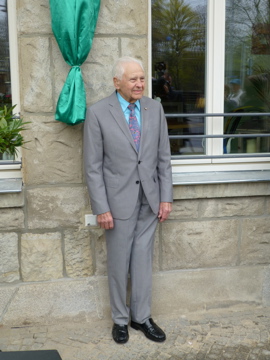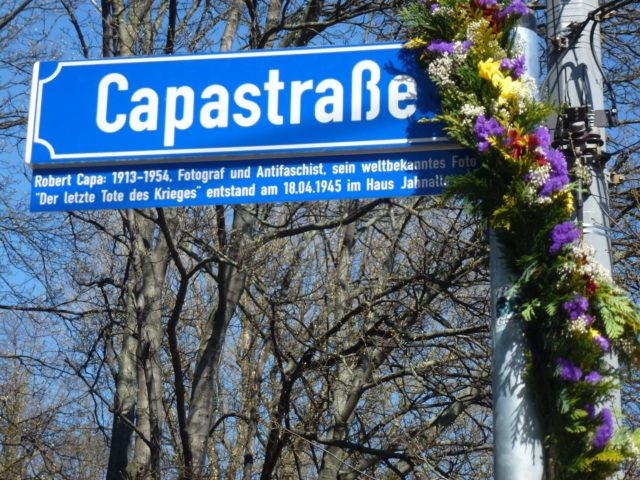The small apartment where Robert Capa’s “Last man to Die,” photograph was taken has been saved from demolition by a combined effort of Leipzig residents, American Army vets and a German investor living in Munich, who has an enviable history of ‘saving historic buildings that tell stories.’
The driving force behind the saving of this building is Meigl Hoffmann who has lived in Leipzig all his life. Hoffman’s parents and grandparents had told him many stories about the war but during the communist era in East Germany there was little information about the American Army’s part in liberating the city, and all the history was about the Soviet role.
When he was 19, Hoffman saw a series of photographs in an underground magazine, and he was inspired by these evocative images. The images had been captured by the renowned WWII photographer Robert Capa. Capa was working alongside American troops in the relief of Leipzig and the image that most inspired Hoffman, Capa had entitled “Last Man to Die”. The image showed the body of Raymond J Bowman, then aged 21 and serving with Company D of the 23rd Infantry Regiment of the 2nd Infantry Division, as he lay dead on the floor of an apartment in Leipzig. He had been shot in the head by a German sniper. There was a series of photographs that showed other GIs taking over Bowman’s machine gun position as his blood slowly spread over the floor. These images featured prominently in the Victory Edition of Life Magazine that was published on the 14th May 1945.
Hoffman and a friend decided to try and find the building where the photograph was taken. All they had was Capa’s description of a “big apartment building that overlooked the bridge”. The Zeppelin Bridge was the scene of fierce resistance by the German forces. The only building that seemed to fit the description and match the visual references in the photograph was Jahnallee 61, a derelict building; “The only building that matched the description didn’t seem to fit at all, as it had no balcony,” said Hoffmann.
With scant time remaining before the building was due to be demolished, Hoffamn and his organization leaped into action and started raising the funds required to save and restore the historic building. They contacted the US war veterans that had fought during the relief of Leipzig and managed to locate Bowman’s partner, Lehman Riggs, who had just stepped inside to reload the weapon when Bowan was shot. Riggs (96) is living in Cookeville, Tennessee, said “The event had so disturbed my mind because of the loss of my buddy; I had tried to block it and hadn’t talked about it for years. But returning to the scene unlocked all the memories.”

They also managed to locate the people that were living in the apartment at that time. Robert Petzold, a Leipzig native was 13 at the time remembers the day as his grandmother had contacted his mother to tell her that the Americans were advancing on Leipzig. Petzold and his family had retreated to the air raid shelter and only returned to the apartment when the all clear was sounded.
Petzold vividly remembers the scene that unfolded when he and his mother returned to find a dead American soldier on the floor of the apartment. “His blood was all over the floor and soaked into a rug. On a dresser in the hallway, she found letters and photographs that had been removed from his pocket, showing a woman and children. She said: ‘They may be our enemies, but they suffer the same fate as us,’” Petzold said.

The Capa Haus project has cost approximately €10.5m (£9m). This money was used to shore up the foundations as well as refurbishing all the apartments and restoring the balconies that had been removed. In addition, some streets have been renamed, and a section of Jahnallee was renamed Bowman Strasse and a second section Capa Strasse. The ground floor has been converted into a restaurant, Cafe Eigler, which houses a display of Capa photographs that tell the story of 18th April 1945.
Meigl Hoffmann succinctly summed up the entire initiative by saying, “There was very little in the city to recall the last days of the Second World War, and we were struck by what a poignant and authentic memorial this actually was.”
